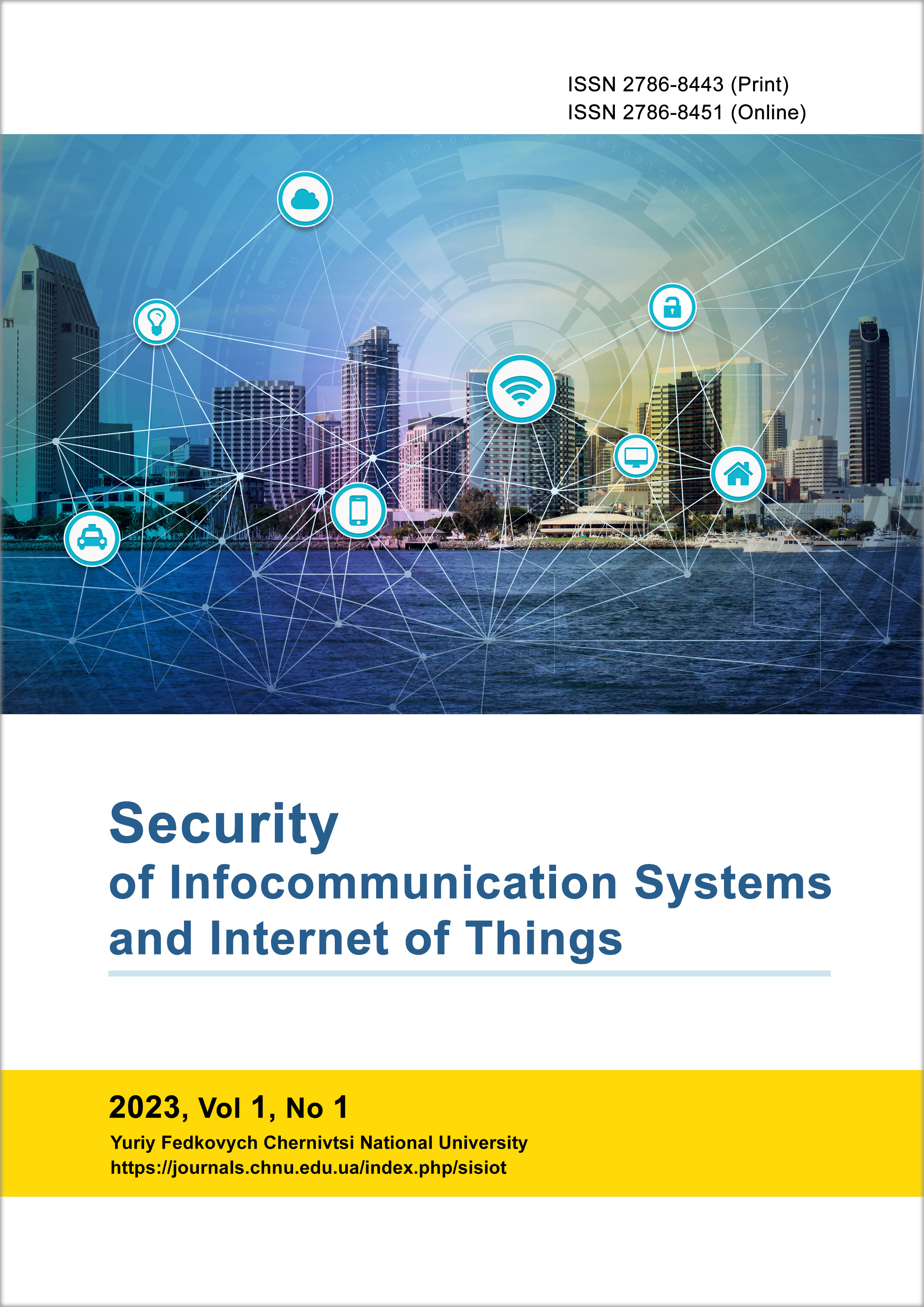Technology of Silicon p-i-n Photodiodes with a Reduced Number of Thermal Operations
DOI:
https://doi.org/10.31861/sisiot2023.1.01002Keywords:
silicon, photodiode, resistivity, responsivity, mesostructureAbstract
The main parameters of the p-i-n photodiodes (PD) are responsivity, dark current and capacity of responsive elements (RE). To ensure the maximum values of the specified parameters, it is necessary to use defect-free silicon with the maximum values of resistivity and life time of minor charge carriers. These characteristics of the starting material degrade during high-temperature thermal operations. Therefore, it is worth using a technology that allows you to avoid the degradation of silicon characteristics. This can be implemented by reducing the temperature of diffusion and oxidation operations, as well as by reducing the number of actual thermal operations. The samples were made according to two versions of the technology: diffusion-planar using two-stage diffusion of phosphorus from planar sources, and mesotechnology using one-stage diffusion of phosphorus using liquid PCl3 diffusant. After manufacturing, the PD parameters were compared. The use of mesotechnology with one-stage diffusion of phosphorus made it possible to reduce the number of thermal operations by two times compared to serial technology. The experimental samples had a pulse responsivity at a wavelength of 1.064 μm of 0.47-0.50 A/W, and the serial ones had a responsivity of 0.45-0.48 A/W. The difference in responsivity is caused by the difference in the life time of minor charge carriers, since in the case of the proposed technology, the degree of degradation of the life time of minor charge carriers during the manufacturing process is smaller. After selective etching, it was seen that when using a liquid diffusant, the density of dislocations on the crystal surface is much higher than when using planar sources of phosphorus. Due to the higher density of dislocations, the experimental samples had higher dark currents, but when using a low bias voltage, the difference in dark currents is insignificant. The RE capacity of the experimental samples was slightly lower than that of the serial ones. This can be explained by the difference in the resistivity of the i-region of the final crystals.
Downloads
References
Aliane, A., Ouvrier-Buffet, J. L., Ludurczak, W., André, L., Kaya, H., Vialle, C., ... & Hartmann, J. M. Fabrication and characterization of sensitive vertical PiN germanium photodiodes as infrared detectors. Semiconductor Science and Technology, vol. 35(3), 035013, 2020. DOI: https://doi.org/10.1088/1361-6641/ab6bf7
Kukurudziak M.S. Formation of Dislocations During Phosphorus Doping in the Technology of Silicon p-i-n Photodiodes and their Influence on Dark Currents. Journal of nano- and electronic physics. Vol. 14 No 4, 04015(6сс), 2022. DOI: https://doi.org/10.21272/jnep.14(4).04015
Peculiarities of changes in the structure and electrophysical characteristics of n-Si under the influence of various heat treatment regimes / H.P. Gaidar // Reports of the National Academy of Sciences of Ukraine. No. 5, pp. 42-51, 2020. DOI: https://doi.org/10.15407/dopovidi2020.05.042 [Ukr]
Bakhrushin V. E. The influence of high-temperature treatments on the physical properties of single crystals and single crystal layers of silicon. Complex systems and processes, No. 1, pp. 32-46, 2005. [Rus]
Lytvynenko V. M., & Bogach M. V. Modeling of heterization processes of fast-diffusing impurities in Schottky diode technology. Bulletin of the Kherson National Technical University. Vol. 68(1), pp. 25-33, 2019. [Rus]
Kukurudziak M. S., & Maistruk E. V. Features of Diffusion Doping and Boron Gettering of Silicon pin Photodiodes. In 2022 IEEE 3rd KhPI Week on Advanced Technology (KhPIWeek). Pp. 1-6, 2022, October. IEEE. DOI: https://doi.org/10.1109/KhPIWeek57572.2022.9916420
Boltar K.O., Chinareva I.V., Lopukhin A.A., Yakovleva N.I. Matrix planar and mesa-structures based on heteroepitaxial InGaAs layers. Applied Physics. No. 5, pp. 10-15, 2013.
Fedorenko A.V. Spectral responsivity of diffused Ge p-i-n photodiodes. Tekhnologiya i Konstruirovanie v Elektronnoi Apparature. No. 3–4, pp. 17 – 23, 2020. http://dx.doi.org/10.15222/ TKEA2020.3-4.17 [Ukr].
Kukurudziak, M. S. Diffusion of phosphorus in technology for manufacturing silicon pin photodiodes. Semiconductor Physics, Quantum Electronics & Optoelectronics. Vol. 25(4), pp. 385-393, 2022. DOI: https://doi.org/10.15407/spqeo25.04.385
Sirtl E. Adler. A. Flubsaure als sperifishes system zur atzgrubenentwicklang auf silizium//Z. Metallk. Vol.119(6), pp. 529-531, 1961. [Ger].
K. Ravey, Defects and impurities in semiconductor silicon. (S.N. Gorina, Trans.) (М.: Мir: 1984) [Rus].
M. S. Kukurudziak, Yu.G. Dobrovolsky, Silicon p – i – n photodiode of increased pulse responsivity, Technology and design in electronic equipment, Vol. 61(1-2), 2021. DOI: http://dx.doi.org/10.15222/TKEA2021.1-2.61 [Ukr].










